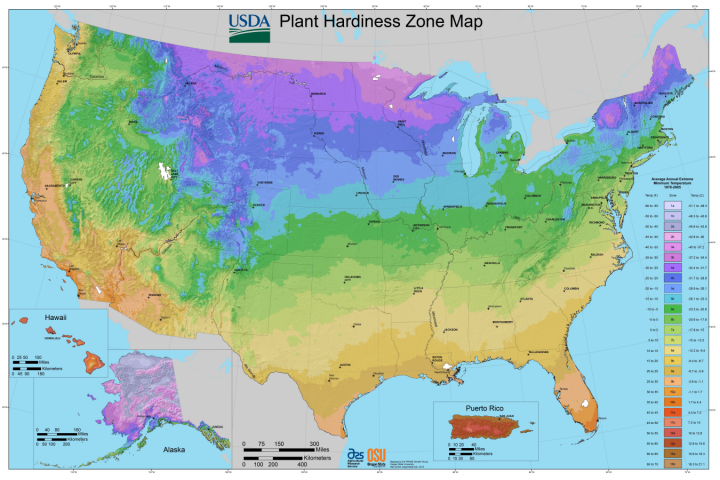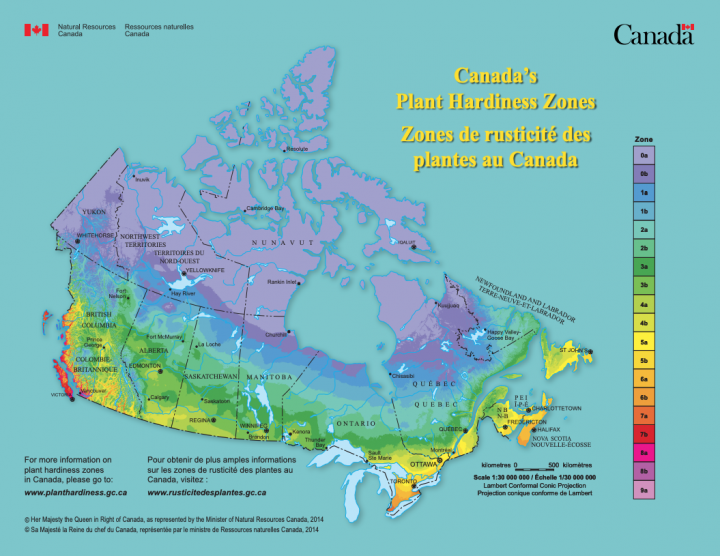What Gardening Zone Is Oklahoma
Exactly which USDA hardiness zone are you in? Plant hardiness zones—also known as planting zones or growing zones—help gardeners understand which plants can survive their region's climate. Find your zone—and learn why it's so important.
What Are Planting Zones?
Not every plant or flower grows and thrives in every climate. When choosing perennial plants for your garden, it's important to select varieties that can survive and thrive year-round in your area, especially in regions where extreme winter temperatures are normal. Planting zones define, generally, which plants can survive winter in your area, and the zones are typically listed in plant growing guides for reference.
The two most commonly referenced hardiness zone maps are those produced by the U.S. Department of Agriculture (USDA) and Natural Resources Canada (NRC). Different measures are used to create each country's map, as explained below.
NOTE: Zone maps are not absolute; if you find the information contradictory to your own experience, you may live in a microclimate. Soil, moisture, humidity, heat, wind, and other conditions also affect the viability of individual plants.
Find Your USDA Planting Zone
Considered the standard measure of plant hardiness, the USDA Plant Hardiness Zone Map is based on average annual minimum winter temperatures. The map is divided into thirteen distinct 10ºF zones, which are further divided into sub-zones of 5°F.

Click here to go to the USDA website and see a map of your state's zones.
How to Use Your Planting Zone
Planting zones are most useful to gardeners growingperennial plants, since perennials are meant to live beyond just one growing season. Perennials need to be able to survive winter in your area, so it's important to know how cold it typically gets in your area and whether a particular plant is hardy enough to survive those temperatures.
Perennial flowers, shrubs, and trees grow best when planted in the appropriate zone. You'll find that winter damage occurs most often when plants are out of their range or "comfort zone." When you choose plants for a garden or landscape, avoid selecting plants that are only marginally hardy for your region; that's when you'll see winter damage, poor growth, and a reduction in flowering.
Planting native species is a surefire way to achieve a stable garden. Native plants are which occur naturally where you live! So, naturally, they will thrive in their habitat. See our article on natural landscaping.
For annual plants, like most vegetables and some flowers, it's far more important to pay attention to things like the length of your growing season and the typical dates of your first and last frosts. (See local frost dates here.) Because annuals are only meant to last the length of one growing season, planting zones don't necessarily factor into the equation.
NRC Canadian Planting Zones Map
Unlike the USDA map, which is based only on minimum winter temperatures, the planting zones map produced by Natural Resources Canada (NRC) considers a wider range of climatic variables, including maximum temperatures and the length of the frost-free period. Because of this, the zones listed in the Canadian and US maps are not on the same scale, so keep that in mind before following one or the other!
NRC also produces a map that shows plant hardiness zones for Canada based on the USDA extreme minimum temperature approach. Click here to see both Canadian planting zone maps.

Learn More
Another key part of successful gardening is knowing when your frost dates are. Find your local frost dates here.
What are your thoughts on planting zones? Are they accurate? Let us know in the comments below!
What Gardening Zone Is Oklahoma
Source: https://www.almanac.com/content/plant-hardiness-zones
Posted by: bransonhisherecur.blogspot.com

0 Response to "What Gardening Zone Is Oklahoma"
Post a Comment